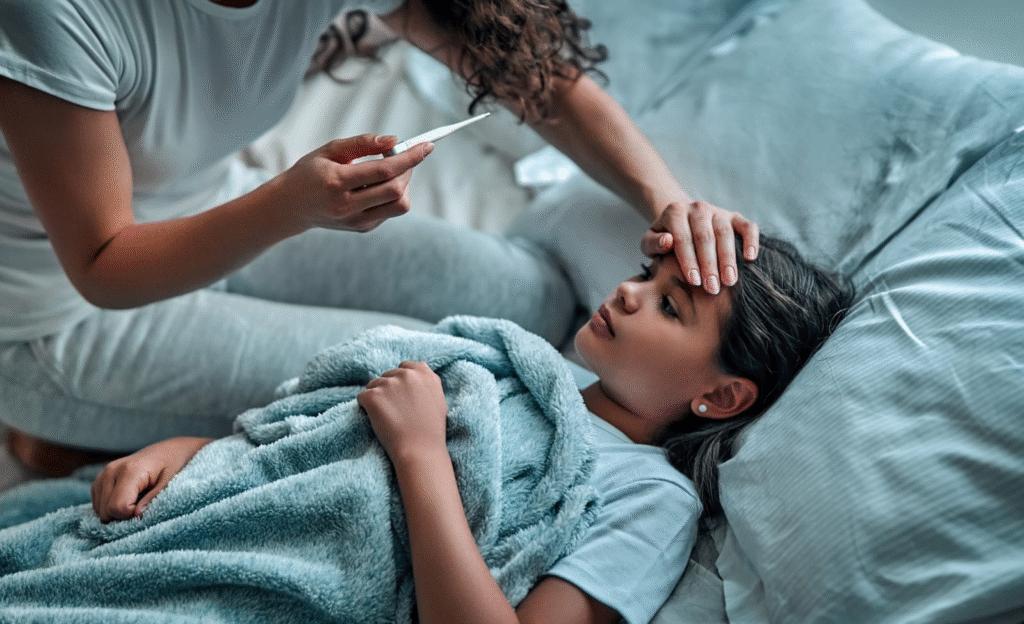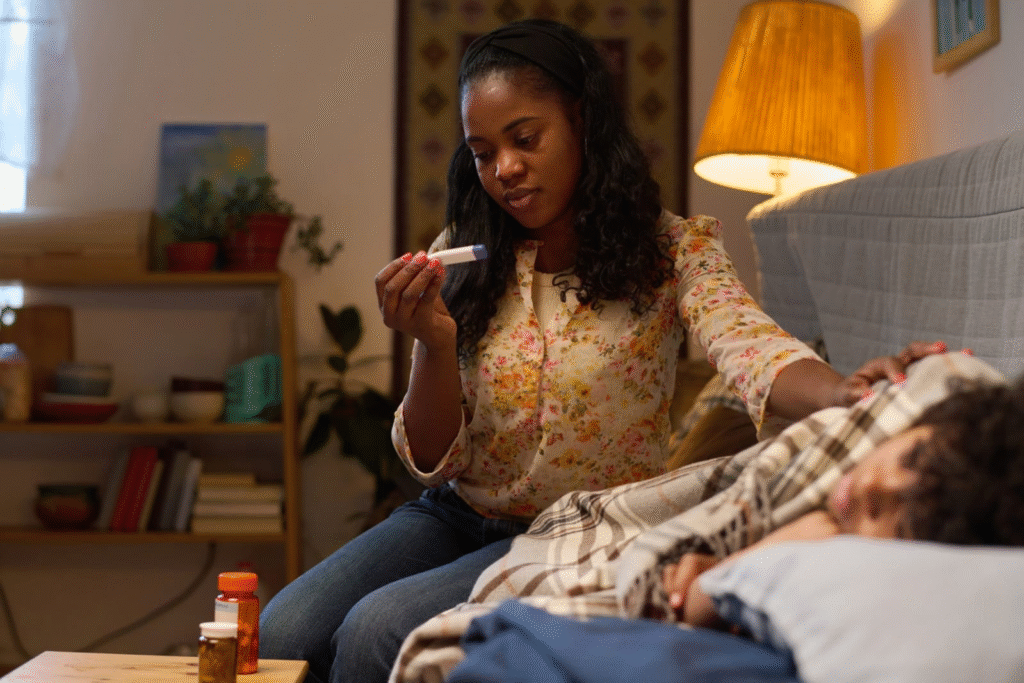
Let’s be honest: that first cold of the season always catches you off guard. One day, your child is fine, the next morning, they’re a sniffling, coughing mess. And then comes the guilt-ridden question every parent face: Do I send them to school or not?
You’ve heard it a million times, but here’s why it’s not just a random number. Fevers typically spike in the evening, which means if your child seems “fine” in the morning, they might crash by lunch. Keep them home for a full 24 hours after their temperature returns to normal without medication. Their body needs that recovery time, even when they’re bouncing off the walls.
Here’s your quick stay-home checklist:
- Fever over 100.4°F
- Vomiting or diarrhea in the past 24 hours
- Persistent cough that disrupts learning
- Unusual lethargy or crankiness
Viral Or Bacterial: The Detective Work
Most childhood illnesses are viral. That’s just the reality. Viruses run their course in 7-10 days, and antibiotics won’t touch them.
But here’s what many parents don’t know: the color of mucus doesn’t automatically mean bacterial infection. Green snot can be totally normal with a virus. Watch for these bacterial red flags instead: symptoms that suddenly worsen after initially improving, high fever lasting more than three days, severe ear pain, or difficulty breathing. Still unsure? Call Idaho Falls Pediatrics. Seriously. That’s what we’re here for.
Idaho’s Dry Climate: Your Secret Immune Enemy

Living in Idaho means dealing with humidity levels that would make a desert jealous. This matters more than you think. Dry air dries out those protective mucus membranes in your child’s nose and throat. The ones that trap germs before they cause trouble.
Run a humidifier in your child’s bedroom at night. Aim for 40-50% humidity. Clean it regularly because nobody needs mold adding to the problem. This one change can dramatically reduce how often your kids get sick.
Beyond Orange Juice: Actually, Effective Immune Support
Forget loading up on vitamin C once they’re already sick. Here’s what actually helps:
Sleep is non-negotiable. Elementary kids need 9-12 hours, and yes, that means earlier bedtimes during cold season. Their immune system does its heavy lifting while they sleep.
Hydration in dry climates is tricky because kids don’t always feel thirsty. Send water bottles to school. Add sliced fruit if they’re resistant to plain water. Herbal teas count too.
Get outside even when it’s cold. Fresh air beats stuffy indoor spaces where germs circulate. Bundle them up and go for a walk. The vitamin D doesn’t hurt either.
Probiotics deserve more attention. A healthy gut actually influences immune function. Yogurt, kefir, or a quality probiotic supplement can make a difference.
So, What Should You Take away?
You can’t prevent every sniffle. You can create an environment where your child’s body fights back effectively. Trust your instincts about keeping them home. Teachers would rather deal with one absent student than a classroom outbreak next week.
And remember: getting sick occasionally is how their immune system learns and strengthens. It’s doing its job.
